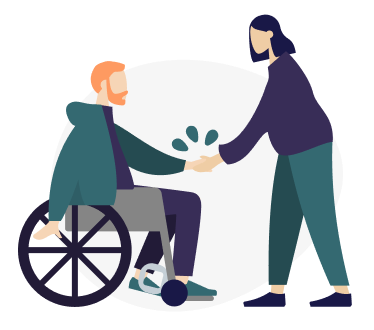Women with Disabilities in Academic Careers
This video profiles women faculty members with disabilities sharing their experiences and perspectives.
This video profiles women faculty members with disabilities sharing their experiences and perspectives.

There are several organizations that are interested in increasing the participation of people with disabilities in computer science, at both the preK-12 level and the postsecondary level.

Hiring the best and brightest team members is top priority for any employer. But, recruiting diverse applicant pools requires inclusive hiring practices from the start. Follow these five steps to recruit competitive applicants with disabilities.
There is a growing understanding in the corporate world that employing people with a range of neurodivergent abilities—such as autism spectrum disorder, dyslexia, attention deficit/hyperactivity disorder (ADHD), dyspraxia, dyscalculia, and sensory processing disorders—can benefit a work team. However, these same disabilities can make it difficult to be successful, especially in job interview processes; in response, some employers have established employment resources for neurodivergent job seekers.
A course syllabus provides an opportunity for an instructor to share key information about the topics that will be covered, course objectives, assignments and due dates, assessments, behavioral expectations, and resources. It is important that it is welcoming and accessible to everyone. As research has shown, diversity in abilities, backgrounds, and interests of students is the norm. In order to make their syllabus appropriate for every student, an instructor can employ techniques underpinned by the Universal Design (UD) Framework.
Whether in person or online, concrete steps can be taken to ensure that conferences, meetings, presentations, and other events are accessible to a diverse audience. Begin by thinking about who might face barriers to an event. These may include individuals who are blind or have low vision, are deaf or hard of hearing, have mobility impairments, are English language learners, and are connecting to virtual meetings via audio only.